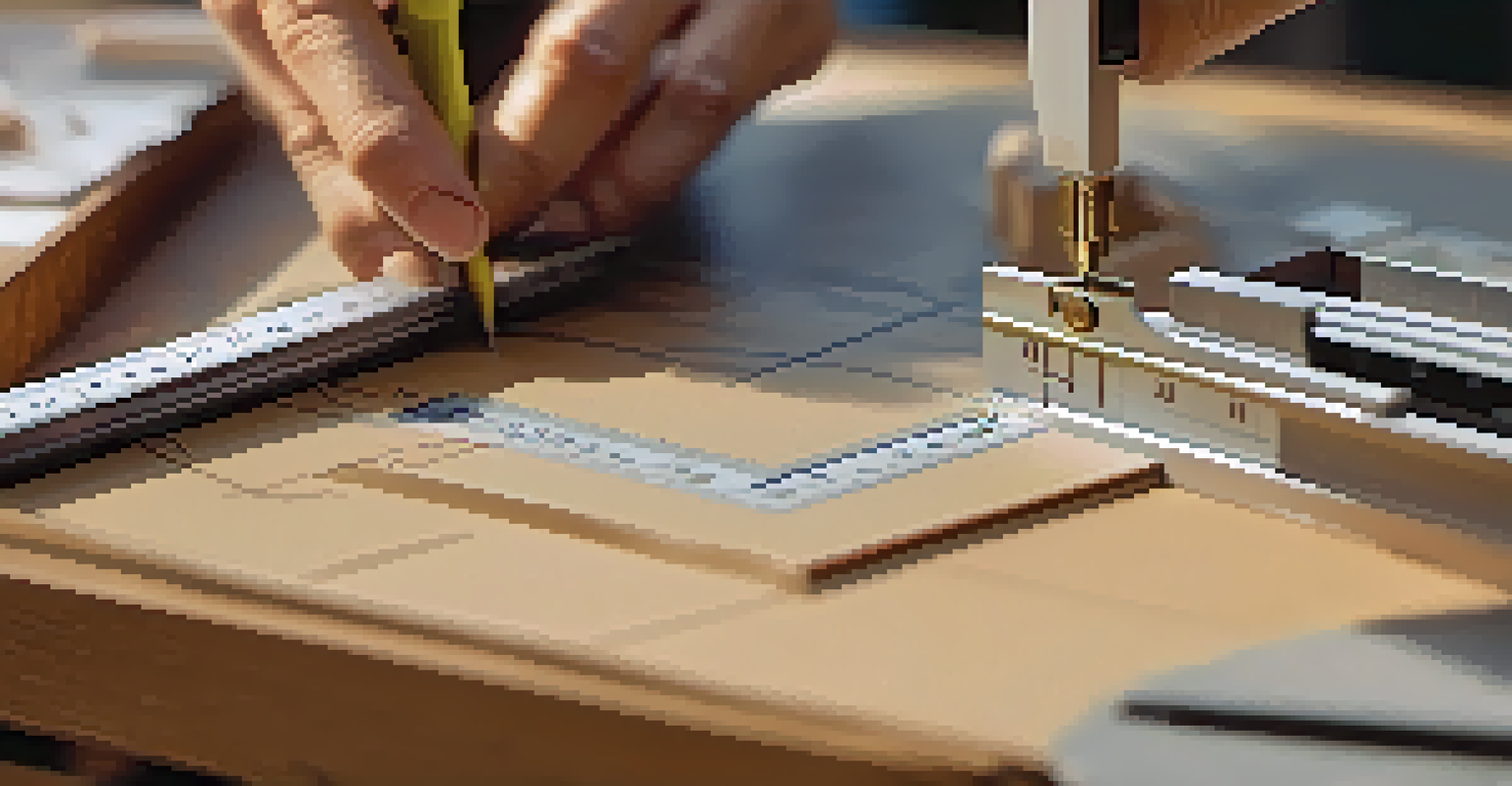Understanding Scale Ratios in Model Building

What Are Scale Ratios in Model Building?
Scale ratios are a way to represent the proportions of a model compared to the actual object. For example, a 1:100 scale means that 1 unit on the model equals 100 units in real life. This concept is essential for creating accurate models that reflect the true size of structures or vehicles.
The details are not the details. They make the design.
Understanding scale ratios helps builders visualize how their models will look in relation to the real-world items they depict. It’s not just about size; it’s about ensuring that every detail, from the width of a door to the height of a window, is proportionate. Without this understanding, models can end up looking disproportionate or unrealistic.
In model building, scale ratios are often accompanied by other terms like ‘scale model’ or ‘scale drawing’. Familiarizing yourself with these terms is crucial, as they will help you communicate effectively with fellow builders and understand the specifications of your project.
Why Scale Ratios Matter in Model Accuracy
Scale ratios are vital for achieving accuracy in model building. When you work with a specific scale, every measurement you take should correlate with that ratio to maintain consistency. For instance, if you’re building a model car at a 1:24 scale, every inch on the model represents 24 inches of the actual car.

Inaccuracies can lead to models that look odd or fail to fit together correctly. Picture building a model airplane where the wings are too large compared to the body because you miscalculated the scale. This kind of oversight can be frustrating and diminish the overall quality of your work.
Understanding Scale Ratios
Scale ratios represent the proportions of a model compared to the actual object, ensuring accurate details and realism.
Moreover, understanding scale ratios enhances your skills as a model builder. It encourages you to think critically about dimensions and proportions, making you more adept at creating lifelike representations. As you gain experience, you’ll find that scale ratios become second nature, improving both your efficiency and creativity.
Common Scale Ratios Used in Model Building
Several scale ratios are commonly used in model building, each serving different purposes. For instance, 1:12 is popular for dollhouse models, while 1:48 is often used for architectural models. Knowing these standards can help you choose the right scale for your project.
Scale is a matter of perception, and every model tells a story at its own scale.
In addition, you might encounter scales like 1:87 for HO scale trains or 1:35 for military models. Each of these scales has a community of builders who share tips and resources tailored to those specific ratios. Understanding which scale to use can help you connect with other enthusiasts and access relevant information.
It’s also worth noting that some projects may require hybrid scales, particularly if you’re incorporating various elements. For example, when building a diorama, you might mix 1:72 figures with a 1:48 structure for dramatic effect. This flexibility allows for creativity, but it’s crucial to be mindful of how different scales interact.
How to Calculate Scale Ratios for Your Models
Calculating scale ratios is a straightforward process, but it requires some basic math. Start by determining the real-world size of the object you want to model. For example, if your subject is a building that is 120 feet tall, and you want to create a 1:100 scale model, you’ll divide the actual height by the scale factor.
Using our example, you would calculate 120 feet ÷ 100 = 1.2 feet. This means your model should stand 1.2 feet tall. Once you understand how to calculate dimensions using scale ratios, you can apply this knowledge to all aspects of your project, ensuring uniformity throughout.
Importance of Accurate Calculations
Accurate calculations of scale ratios are essential for maintaining consistency and preventing errors in model construction.
In some cases, you might find models that use non-standard scales. In these instances, it’s essential to convert the measurements to a common scale for easier comparison and adjustments. Familiarity with basic conversion techniques will empower you to tackle any model building challenge with confidence.
Tools and Resources for Scale Ratio Calculations
To aid in your scale ratio calculations, various tools and resources are available. Scale calculators, either as apps or online tools, can simplify the process by automatically converting measurements based on your chosen scale. These tools can save time and reduce errors, allowing you to focus on the creative aspects of model building.
Additionally, many model kits come with scale guides that provide measurements for different components. These guides can be extremely helpful, especially for beginners who are still mastering the concept of scale. They serve as both a reference and a learning tool.
Don’t forget about community resources! Online forums and social media groups often share templates, spreadsheets, and calculators designed to help model builders. Connecting with others can provide insights and shortcuts that enhance your building experience.
Challenges of Working with Scale Ratios
While understanding scale ratios is crucial, it can also present challenges. One common issue is working with very small or very large scales, which can complicate details. For instance, building a model at 1:500 might make it difficult to represent intricate designs accurately.
Another challenge is the potential for miscommunication. If you’re collaborating with others, it’s vital to ensure everyone is on the same page regarding scale. Using the wrong scale can lead to pieces that don’t fit together, wasting time and materials.
Resources for Model Builders
Utilizing tools, guides, and community resources can significantly enhance the model building experience and improve accuracy.
Lastly, as you gain experience, you may want to experiment with custom scales. While this can lead to unique projects, it also requires a solid grasp of ratios to avoid mistakes. Embracing these challenges can ultimately enhance your skills and creativity as a model builder.
Practical Tips for Applying Scale Ratios
To effectively apply scale ratios in your model building, start by sketching your design with the chosen scale in mind. This preliminary step helps you visualize dimensions and make adjustments before construction begins. It’s like laying the groundwork for a building; a strong foundation leads to a successful project.
Next, keep a conversion chart handy. This can help you quickly reference measurements and avoid potential errors. Whether you create a physical chart or use a digital version, having this resource at your fingertips can streamline your workflow.

Lastly, don’t hesitate to seek feedback from fellow builders. Sharing your work and asking for input can uncover insights about scale ratios that you might not have considered. Building a community around your passion not only improves your skills but makes the process much more enjoyable.